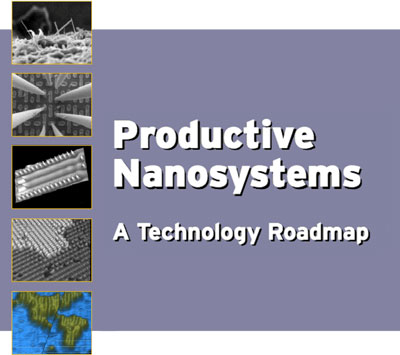| Posted: December 7, 2007 |
Nanotechnology roadmap for productive nanosystems now available |
|
(Nanowerk News) The final version of the Technology Roadmap for Productive Nanosystems has been released. This marks the completion of the first broad, multidisciplinary effort to explore how current laboratory techniques for atomically precise fabrication can be extended, step by step, toward increasingly advanced products and capabilities.
|
 |
|
The Roadmap project was led by the Battelle Memorial Institute, a not-for-profit corporation that manages a set of U.S. National Laboratories that includes Pacific Northwest, Oak Ridge, and Brookhaven. These labs hosted three of the Roadmap workshops and provided many of the participating scientists and engineers.
|
|
Built around a series of workshops launched in 2005, the project has delivered a report totaling some 400 pages. It provides a picture of the state of the art in atomically precise fabrication and explores directions for both next-stage and longer-term research and applications.
|
|
Developments in the last 12 months show that the Roadmap is quite timely: As part of a study released last December, the U.S. National Research Council reviewed the technical analysis that E. Drexler presented in Nanosystems: Molecular Machinery, Manufacturing, and Computation and called for experimental research in support of molecular manufacturing. Subsequently, DARPA issued a request for proposals for developing tip-based nanofabrication at the threshold of atomic precision, and the U.K. government announced grants to research teams developing nanomachines that can build materials molecule by molecule.
|
|
The Technology Roadmap for Productive Nanosystems describes ways to move nanotechnologies forward in directions that Eric Drexler has outlined in his technical publications. It centers on today's capabilities, exploring the rewards we can expect from incremental advances, and links these advances to longer term objectives for atomically precise manufacturing (which, by the way, are quite unlike the popular fictions).
|
|
Perhaps of greatest value, the Roadmap identifies broad criteria that can help researchers and research managers select high-payoff projects that can contribute to the emerging field of atomically precise nanosystems engineering. An area of special promise is integrating other nanotechnologies into complex, functional systems by exploiting recent breakthroughs in building self-assembling, atomically precise DNA structures.
|

